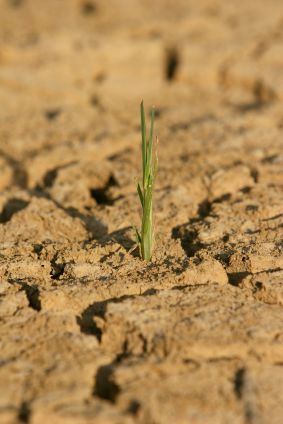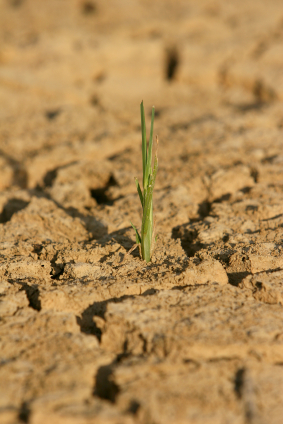 Not many “green shoots” in the Central Valley. California’s severe drought–which could well be related to climate change–isn’t just menacing Los Angeles.
Not many “green shoots” in the Central Valley. California’s severe drought–which could well be related to climate change–isn’t just menacing Los Angeles.
The drought has helped tip the state’s Central Valley, epicenter of U.S. fruit and vegetable production, into a severe crisis, The Wall Street Journal reports. Hammered by dry weather, the weak economy, and new restrictions on irrigation, the area’s vast farms are scaling down production and firing workers. The result is a full-on economic depression–one that falls hardest on the most vulnerable workers. From the Journal article:
“We either have money for gas and medicine, or food — not both,” Helen Hernandez, a 51-year-old mother of four, said after collecting a pallet of food from the relief drive. Ms. Hernandez said her husband, David, 49, has been out of work since losing his $1,200-a-month job at a tomato-packing house last year.
In a Wednesday editorial, the Journal’s right-wing editorial page blamed the situation on the federal government, which has restricted the diversion of water into the Central Valley to protect the coastal ecosystem to the west. Over the last several decades, water has regularly been diverted en masse from the area’s rivers to irrigate the Valley’s vast vegetable farms. As a reuslt, the amount of freshwater entering the coast had plunged–causing coastal fish populations to plunge as well. In response, the U.S. Fish and Wildlife Service imposed water reductions on the area–just as the drought was settling in.
For the Journal editorial page, the solution is simple–let the water flow freely into the Central Valley, fish be damned.
But should we really be sacrificing a once-robust, highly productive coastal ecosystem so that a few counties in California can go on supplying the entire nation with vegetables? (To see just how dependent we are on California for our veggies, see page 25 of this document [PDF]–or read my post on the topic from last spring.)
It’s hard to see why the Delta fishery should be allowed to die to save the Valley’s massive industrial farms. Moreover–this should register with the ultra-libertarians at the Journal editorial page–the diversion of irrigation water to Central Valley farmers has traditionally been subsidized to the tune of $100 million per year in taxpayer cash, according to Environmental Working Group.
I have lots of sympathy for the thousands of unemployed, struggling workers in the Central Valley. State and federal aid should flow their way. But the way forward is not a return to agribusiness as usual there. The Central Valley needs to diversify its economy in a way that works not only for area residents, but also for the surrounding ecosystem. (Besides industrial agriculture, the area’s other main industry was, until recently, construction–the very kind of sprawling development that is now itself mired in a deep crisis.)
As to the question of where we’re going to get vegetables as agriculture in the Central Valley withers, it’s time to get serious about rebuilding local and regional food production.



